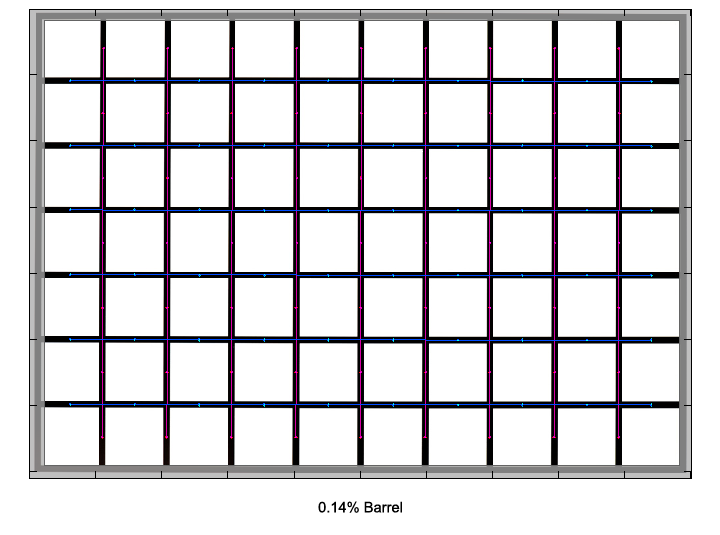|
Page 2 of 2

Distortion
On DX cameras the lens is practically free of distortion.

The chart above has a real-world size of about 120x80cm.
Vignetting
Being a FX lens, the Nikkor profits from the sweet spot advantage on DX cameras. So, even though it's a very fast lens, it shows only moderate vignetting wide open, which is reduced to an irrelevant level at f/2 already.

MTF (resolution)
The lens delivers very good resolution in the image center wide open. Stopped down do f/2, the center resolution is already excellent and stays on a very high level down to f/8. From f/11 onwards, diffraction significantly reduces the resolution figures.
Borders and corners follow a bit behind with good (corners) to very good (borders) resolution wide open. Stopped down to f/5.6 or f/8, both borders and corners manage to reach excellent sharpness, too.
For such a fast lens this is an impressive performance. Unfortunately there is one issue that spoils the party a little bit: the lens showed a slight amount focus shift when stopping down (residual spherical aberration).
Please note that the MTF results are not directly comparable across the different systems!
Below is a simplified summary of the formal findings. The chart shows line widths per picture height (LW/PH) which can be taken as a measure for sharpness.
If you want to know more about the MTF50 figures you may check out the corresponding Imatest Explanations

Chromatic Aberrations (CAs)
Chromatic aberrations (color shadows at harsh contrast transitions) are well under control with values of below 0.5 pixels at the image borders.
CAs can easily be corrected in software or by the camera itself (most modern Nikon DSLRs remove CAs themselves if you shoot JPGs).

Bokeh
One of the primary usage scenarios for a large aperture lens is to seperate the main subject from the background. In such an image the quality of the bokeh (out-of-focus blur) is of major significance.
As you'd expect from a fast portrait lens the quality of background blur is in a very high level. However, there's a tad of nervousness, especially in the transition zone. Stopping down slightly helps to reduce the issue, though.
Thanks to 9 rounded aperture blades, background highlights retain their circular shape throughout the whole aperture range, except towards the image corners. Due to mechanical vignetting they are show a cat's eye shape wide open. There is a small amount of outlining and some traces of Bokeh fringing (which is typical for this lens class, see next section).

Bokeh Fringing
Bokeh fringing is a common issue with relatively fast glass. It's visible as halos of different colors in out-of-focus areas - magenta (red + blue) in front of the focus point
and green beyond.
Typical for most fast primes, especially ultra fast ones, the AF-S 85 shows noticeable bokeh fringing at large aperture settings, which can of course be reduced by stopping down.
In addition, these shots also show the focus shift when stopping down, which was mentioned in the MTF section.
Sample Images
You can find some sample images taken with the Nikon D3x in our Nikon FX review of the lens.
VerdictNikon has a winner here, the AF-S 85/1.4 performs on a very high level. Sharpness is excellent in the image center from f/2 onwards, border and corners follow only slightly behind wide open, reaching excellent resolution stopped down, too. For a portrait lens, this is a quite rare performance characteristic. For the intended usage, portraiture, a lack of sharpness towards the borders and corners usually would not be an issue, but having the extra sharpness available opens up new creative options.
Typical for a FX prime used on a DX camera, the amount of vignetting is a bit pronounced at the largest aperture, but no issue anymore when stopped down. As with most fast glass, there is a fair amount of Bokeh fringing. CAs are well controlled and there is virtually no distortion. As you'd expect from such a lens it offers very smooth bokeh.
The build quality is on a very high level. Thanks to an AF-S drive autofocus action is virtually silent and quite fast for a portrait lens.
So, in summary, the lens is no doubt highly recommended!
|